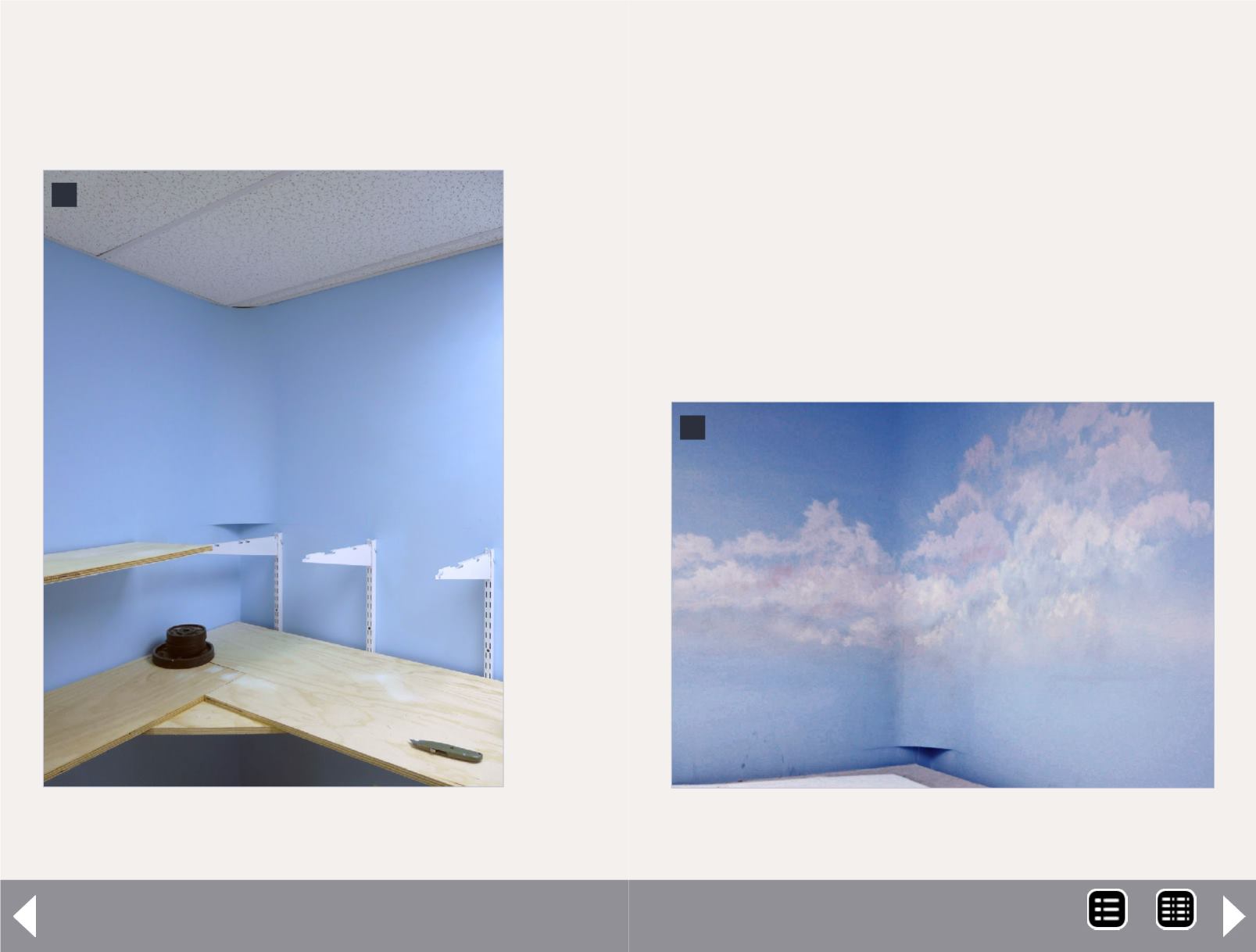
More than 30 years ago, I followed the methods used by
diorama builders at the National Museum of Natural History at
the Smithsonian. Half-inch drywall was hung installed around
the room to within 16” of the corner. From there, ¼” or 3/8”
4
4. Notice where the wall and ceiling join: the radius is
between 4 and 5 inches.
drywall was used. Coming out of the corner, ¼” or 3/8” tran-
sitioned back to half inch. Galvanized sheet metal with a lip
folded on each side was slipped into the transition joints and
plastered. It took good work with a trowel. The penultimate
step was giving the sheet metal a coat of special galvanized
primer. Once primed and painted, the job was done. The cor-
ners were perfect and resisted cracking for over 20 years.
New products for coving corners
The game changer is vinyl. Vinyl rolls .015 inches or 15 mils
thick are sold in 10”, 12”, 14”, 20” and 24” widths. They are
found where aluminum flashing is sold in your neighborhood.
Vinyl can be cut with a utility knife, tin snips or scissors. Vinyl
rolls come in standard lengths of 30 and 50 feet. Home Depot's
Coving your corners - 3
5
5. I painted these clouds with acrylics as an
experiment. The vinyl flexed harmlessly.
MRH-Dec 2013


